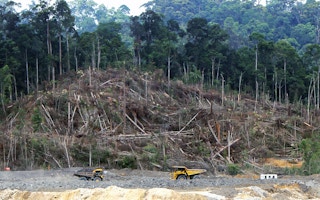These days, green bonds seem to feature prominently in the news, with investors from Europe, the US and Asia flocking to them and banks building brand value from their environmental sheen.
Designed to fund businesses and projects that have positive environmental benefits and around for some 10 years, they account for a tiny 0.4 per cent of the $100 trillion global bond market. Over-hyped, they are being misused and do more harm than good.
Consider that Poland recently raised €1 billion from a second green bond, after its 2016 €750 million (US$927 million) green debut. Poland’s “green” bonds, however, fund token projects that distract from the Polish government’s public (and loud) policy to promote coal and deforestation.
Yet the banks involved apparently were fine with what must be the antithesis of green investing: Using green labels to obfuscate environmental irresponsibility and destruction.
Or consider Indonesia, the first Asian country to sell bonds labelled “green” in a US$1.25 billion deal. Indonesia’s “green” bond paperwork commits the country to nothing except vague promises that all will be green and well.
That’s from a country famed for out of control palm oil production driving massive deforestation and haze as well as for an energy sector addicted to oil and coal even though Indonesia is endowed with plentiful, free sun and wind.
“
Countries and companies don’t have to turn responsible or green at all to issue a “green” bond, and that’s just wrong.
Banks underwriting these “green” bonds are responsible for other outrageous outcomes, including “green” bonds funding clean coal (there is no such thing as clean coal) or bonds issued by fossil-fuel powered utilities.
“Green” is being promoted as the minuscule exception to the general rule; and an abused exception at that: Ninety-nine point six per cent of the bond market (green bonds account for just 0.4 per cent) is functioning very nicely with no concern whatsoever to whether the money raised is exacerbating climate change and harming the environment.
Countries and companies don’t have to turn responsible or green at all to issue a “green” bond, and that’s just wrong. All they have to do is to sign up to cheap and cheerful voluntary standards such as the Green Bond Principles.
Once a bond is issued, there are neither penalties if companies or countries subsequently break their green promises, nor robust ways of measuring and verifying whether these are kept. There isn’t even a consistent definition of what is ‘green’, which suits the market very well: Everyone from oil companies to banks are piling in with questionable deals. It must be incredibly convenient for corporations and sovereign issuers that money is fungible by its very nature, and therefore no one knows where it’s really going.
Meanwhile, we are far from mobilising the climate finance necessary to keep global warming below 2 degrees Celsius: According to the IEA, we need to invest $1 trillion a year to transition the world to clean energy. We are investing, at best, $330 billion.
However, despite the rather large volume of hot air from institutional investors about responsible investing and climate risks, it turns out that, for example, they contributed a minuscule 1 per cent to global renewable energy investments in the last three years.
To achieve the necessary impact, all bonds should be green and what we should be developing are solutions for ensuring this is gradually the case. To get there, green bonds should be phased-out so that the fig leaf investors, issuers and banks are hiding behind to pretend they are making a difference is taken away.
At the same time, corporations, investors and banks should push for the large-scale adoption of an alternative approach recently pioneered by Philips, the Dutch healthcare technology group, French food major Danone, state utility EDF and branded cheese company Bel Group: All have introduced environmental, social and governance (ESG) criteria into their banking lines of credit. The interest rates these groups pay go up or down depending on how they perform on agreed ESG criteria, periodically checked by a third-party.
The same can be done for every bond (not just “green” bonds), if the corporates and the sovereigns issuing them are genuinely concerned to do the right thing. Issuers would be financially recompensed or penalised based not only on their credit strength during the life of the bond, but also on their contribution over time to the fight against climate change, water stress, pollution, deforestation and ocean acidification.
Criteria would be tailored to each company or country (for example water usage would be emphasised in the case of bottling companies whereas greenhouse gas emissions would feature more prominently for electric utilities) and all would be judged on how they perform over time against their ESG commitments.
We have maybe five or ten years to upend how we do business, before climate change takes an irreversible, brutal path. Meanwhile, green bonds are standing in the way of effective climate action.
Assaad W. Razzouk is a Lebanese-British clean energy entrepreneur, investor and commentator. He is Group Chief Executive and Co-Founder of Sindicatum Sustainable Resources, a global clean energy company headquartered in Singapore; a Board member of the Climate Markets & Investment Association (CMIA); a member of the international Board of Advisors for Eco-Business and a commentator on climate change, natural capital and clean energy.











